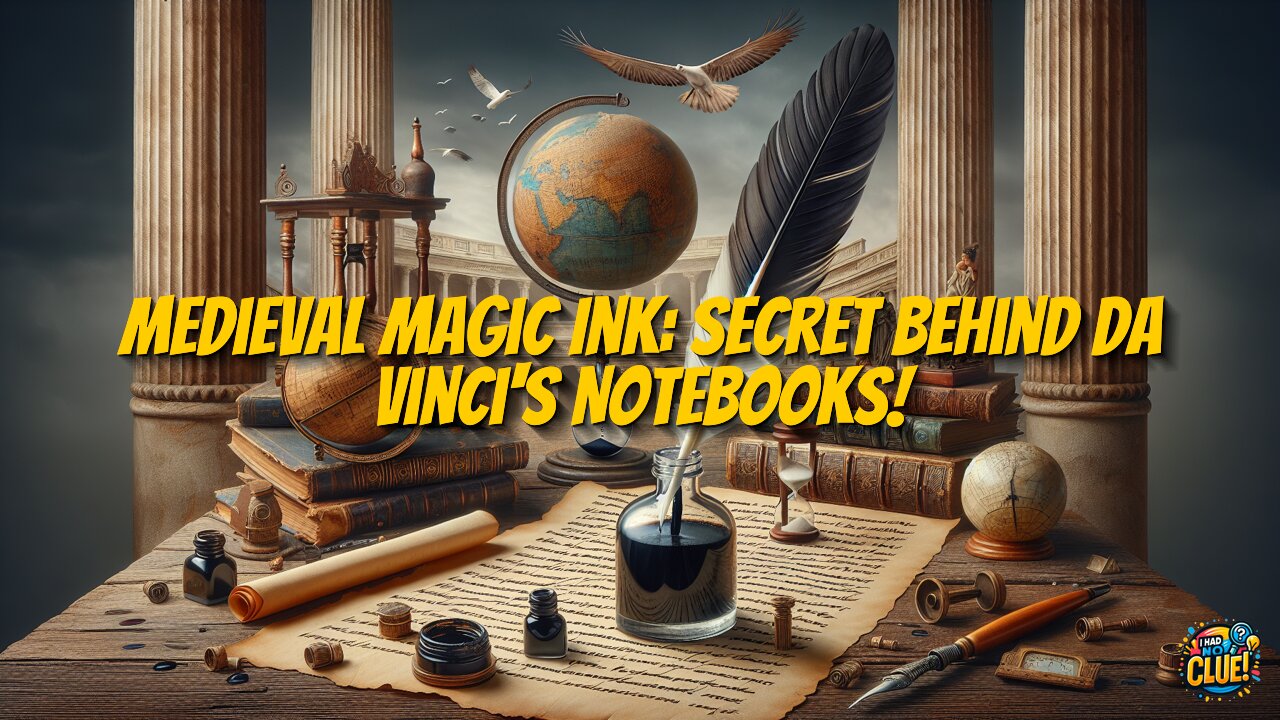Premium Only Content

Medieval Magic Ink: Secret Behind Da Vinci's Notebooks!
https://www.ihadnoclue.com/article/1063090140403564545
Iron gall ink, a writing medium that has been in use from the 5th to the 19th centuries, played a crucial role in preserving Western civilization's intellectual heritage. Created from a mixture of crushed oak galls (created by wasp larvae), water, and iron sulfate, this ink was used in monastic manuscripts, Leonardo da Vinci's notebooks, Isaac Newton's scientific writings, Bach's compositions, and even the Declaration of Independence. Despite the ink's corrosiveness, its permanence enabled texts to survive centuries of handling and environmental exposure. This ink was a remarkable product of medieval and Renaissance proto-scientific experimentation, with the recipe reflecting a sophisticated chemical knowledge before the existence of formal chemistry. The preparation process was linked to natural cycles, with oak galls harvested in autumn after wasp larvae created these growths on oak trees. This ink's widespread adoption across Europe standardized writing technology, facilitated the transmission of ideas across boundaries, and significantly influenced Western intellectual development. Despite its significant role in preserving historical records, the ink's acidic nature has also presented modern conservators with substantial challenges due to its corrosive effects on parchment and paper. Digital preservation faces similar challenges today, underscoring the complex interrelation between material technologies and intellectual culture.
-
 40:20
40:20
The White House
2 hours agoPresident Trump Joins Law Enforcement and Military Personnel in Washington, D.C.
12.6K16 -
 1:22:25
1:22:25
Kim Iversen
19 hours agoPsychic Medium Blows Lid Off "Interdimensional Beings" | Evil Spirits or Psyop?
37.8K41 -
 1:04:35
1:04:35
The Officer Tatum
2 hours agoLIVE: Trump SAVES DC, Letitia James Fine THROWN OUT + MORE | EP 160
13.2K10 -
 1:58:01
1:58:01
Redacted News
3 hours agoHIGH ALERT! Netanyahu Calls for Mass Censorship as Israel Prepares MASSIVE Invasion of Gaza City
85.9K46 -
 36:03
36:03
Kimberly Guilfoyle
4 hours agoA New Day in DC: Appeals Court Throws Out Witch Hunt Case, Live! | Ep248
24K9 -
 1:13:59
1:13:59
vivafrei
5 hours agoBig Tish Gets SPANKED! Appeal Court ANNULS $500 Million! Corruption at the FED? Trans Madness & MORE
95.4K27 -
 1:53:59
1:53:59
The Quartering
5 hours agoToday's Breaking News!
83.1K17 -
 5:38
5:38
Dr. Nick Zyrowski
10 days agoHow To Do a VITAMIN C Flush - Untold Truth!
43.9K4 -
 8:21
8:21
MattMorseTV
4 hours ago $3.51 earnedTrump just SCORED a $500,000,000 LEGAL WIN.
39.4K19 -
 1:00:00
1:00:00
The White House
9 hours agoVice President JD Vance Delivers Remarks at ALTA Refrigeration Inc
50.7K23